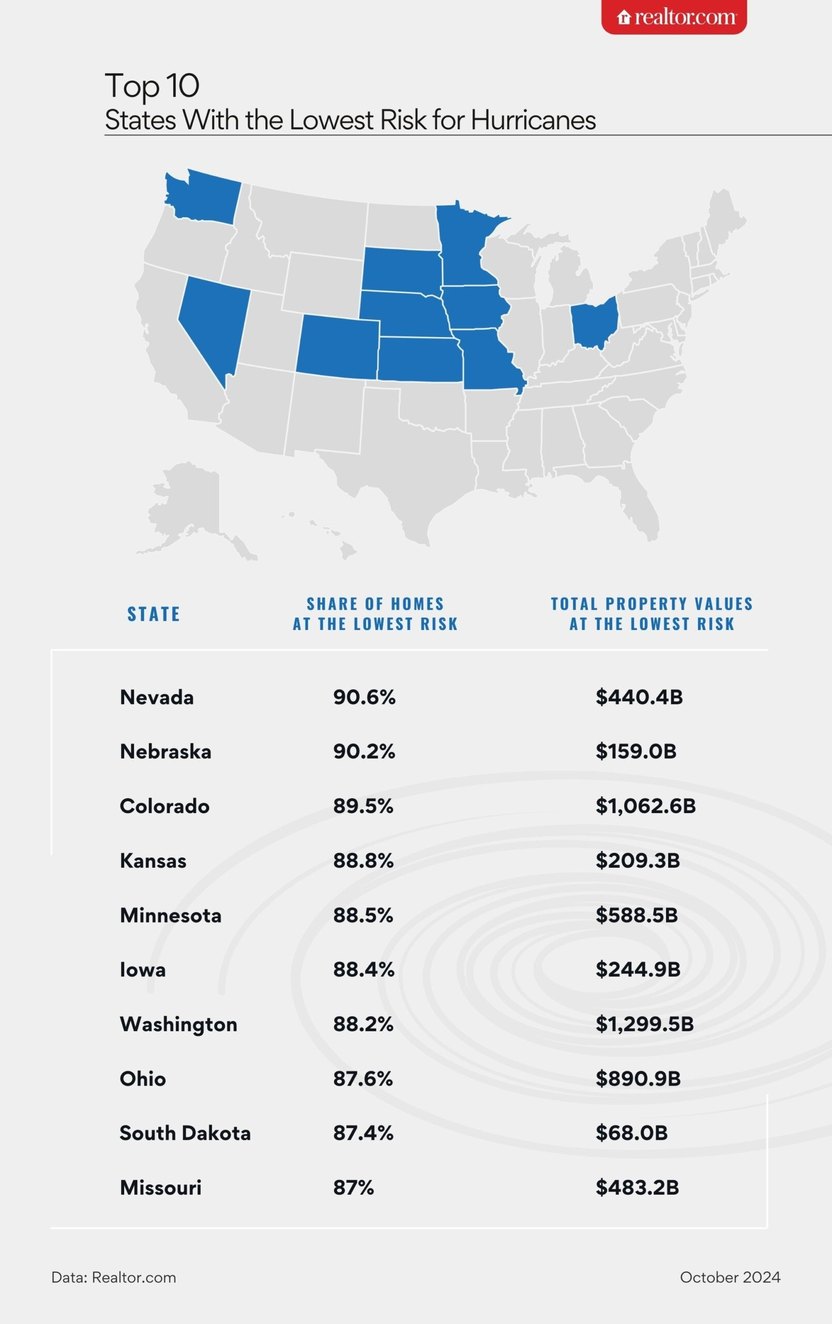The impending one-two punch of Hurricane Milton forming in the Gulf of Mexico, after Hurricane Helene made landfall in the Big Bend region of the Florida Gulf Coast just days ago, flooding much of the southeastern U.S., has forced thousands of Floridians in the Tampa Bay and St. Petersburg areas out of its projected path.
The National Hurricane Center forecasts Hurricane Milton to be a large and extremely dangerous hurricane when it approaches the west coast of Florida Wednesday, bringing hurricane-force sustained winds of 126 miles per hour and life-threatening storm surges. In addition to storm surge and extreme winds, Milton is expected to bring heavy rain and the risk of life-threatening flooding, especially in areas with coastal and inland flooding.
According to CoreLogic, the potential for extreme winds and devastating storm surge is high from Milton, especially given the shape of Tampa Bay and the shallow waters off the coast, both of which could exacerbate coastal flooding. The last hurricane to directly hit the Tampa Bay area was over 100 years ago, known as the Tarpon Springs Hurricane, which struck Florida just north of Tampa Bay in late October 1921. The storm made landfall in Tarpon Springs on October 25 as a Category 3 storm with sustained winds of around 115 miles per hour causing significant destruction.
On Monday, President Joe Biden declared that an emergency exists in the state of Florida and ordered federal assistance to supplement state, tribal, and local response efforts due to Hurricane Milton. The President’s action authorizes the Department of Homeland Security and the Federal Emergency Management Agency (FEMA) to coordinate all disaster relief efforts which have the purpose of alleviating the hardship and suffering caused by the emergency on the local population, and to provide appropriate assistance for required emergency measures, authorized under Title V of the Stafford Act, to save lives and to protect property and public health and safety, and to lessen or avert the threat of a catastrophe.
Impact on Housing
One hundred years ago, the Tarpon Springs Hurricane inflicted an estimated $10 million in damages at the time, a price tag that would be significantly higher today when adjusted for inflation. More significant than inflation, growth in the area since 1921 in the Tampa Bay, St. Petersburg, and their surrounding regions have grown significantly.
According to CoreLogic, the Tampa Bay-St. Petersburg area contains a diverse array of buildings, as well as significant urban development over the past decades. Tampa Bay and St. Petersburg have a mix of residential buildings, ranging from single-family homes to high-rise condominiums. In the city of Tampa alone, there are approximately 157,000 housing units. St. Petersburg adds around 109,000 housing units to the total. When considering the broader Tampa-St. Petersburg-Clearwater, Florida metropolitan area, including other parts of Hillsborough, Pinellas, and Pasco counties, the number of residential buildings increases to 1.5 million. The commercial real estate sector in the Tampa Bay area comprises numerous office buildings, retail spaces, hotels, and industrial properties. In Tampa, notable commercial districts such as downtown, Westshore, and Ybor City contribute to a dense concentration of commercial buildings. St. Petersburg’s downtown and waterfront areas are similarly rich in commercial properties, including several notable office towers and retail centers.
The season’s eighth named storm, Hurricane Helene, put an estimated 25,000 homes at risk of storm surge flooding according to CoreLogic, with estimated wind and storm surge insured losses between $3-$5 billion. CoreLogic’s updated Hurricane Helene industry insured loss is estimated to be $10.5-$17.5 billion total, and nearly 730,000 homes remain without power.
Aside from the loss of housing, ABC News reports that more than 230 people have been killed from Hurricane Helene across Florida, Georgia, South Carolina, North Carolina, Virginia, and Tennessee.
Homeowners Seeking Safety
After Hurricane Helene, Redfin polled U.S. residents aged 18-34 to gauge migration patterns in the wake of the storm. The poll found that 32% of U.S. residents aged 18-34 said they would reconsider where they want to move in the future after seeing or hearing about the damage caused by Hurricane Helene—compares to 15% of respondents aged 35 and older.
In 2024 alone, major storms have caused in excess of $25 billion in damages nationwide, and due to climate change, the number of floods worldwide has increased by 20% since 2000.
“Hurricanes present substantial challenges for homeowners, including property damage, increased financial costs, community recovery issues, and emotional stress,” said Realtor.com Economist Jiayi Xu. “These factors can greatly hinder homeowners’ ability to recover and rebuild after a hurricane.”

Realtor.com recently ranked U.S. states based on the share of homes that faced the lowest hurricane, flood, or fire damage probability versus the share of homes located in high-risk areas (First Street Foundation’s wind factor scores were used to determine hurricane risk and corresponding flood risk). Realtor.com then looked at the value of the homes in those low-risk areas to determine what states had the lowest risk. The states with the lowest extreme-weather risk levels included:
- In Nevada, the share of homes at the lowest risk was at 90.6%, with total property values at the lowest risk of $440.4 billion.
- In Nebraska, the share of homes at the lowest risk was at 90.2%, with total property values at the lowest risk of $159 billion.
- In Colorado, the share of homes at the lowest risk was at 89.5%, with total property values at the lowest risk of $1,062.6 billion.
- In Kansas, the share of homes at the lowest risk was at 88.8%, with total property values at the lowest risk of $209.3 billion.
- Rounding out the top five, in Minnesota, the share of homes at the lowest risk was at 85.5%, with total property values at the lowest risk of $588.5 billion.
“Opting for a property in states with a lower hurricane risk can help alleviate these concerns,” Xu added. “Realtor.com offers property-specific environmental risk scores that assess hazards like hurricanes and floods. Prospective homeowners can use these scores to evaluate climate-related risks in different areas, helping them identify ‘safer’ locations before making their final decision.”
Click here for more on Realtor.com’s examination of the nation’s top locations safe from hurricanes and storms.
The post Tampa Bay Region Braces for Hurricane Milton first appeared on The MortgagePoint.
























